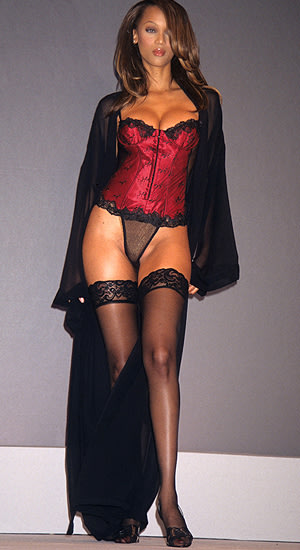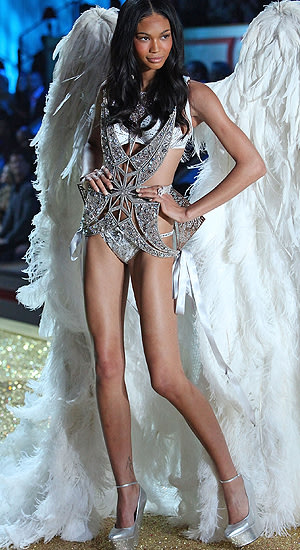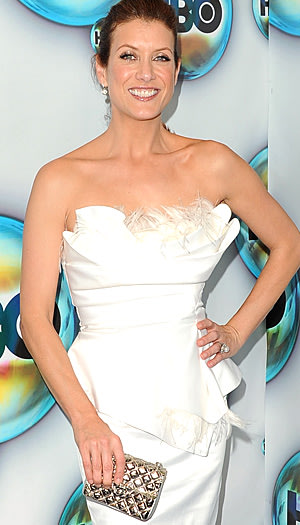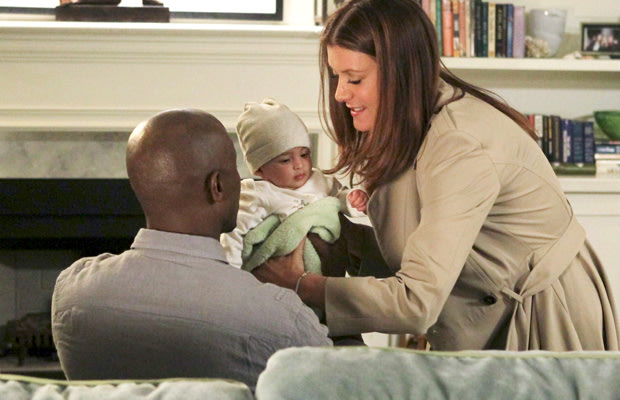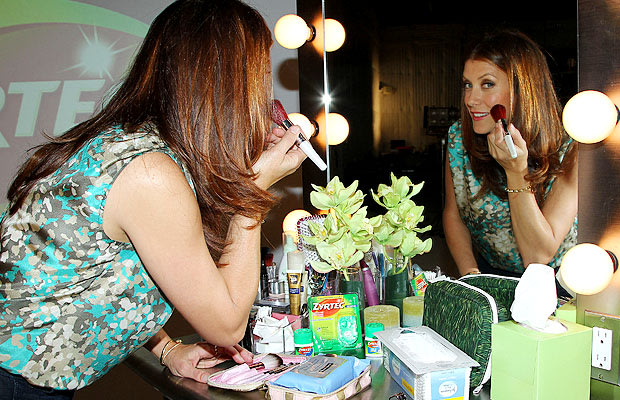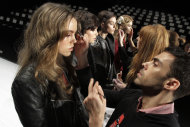Will new attitudes and regulatory oversight hit delete on some photo retouching in print ads?
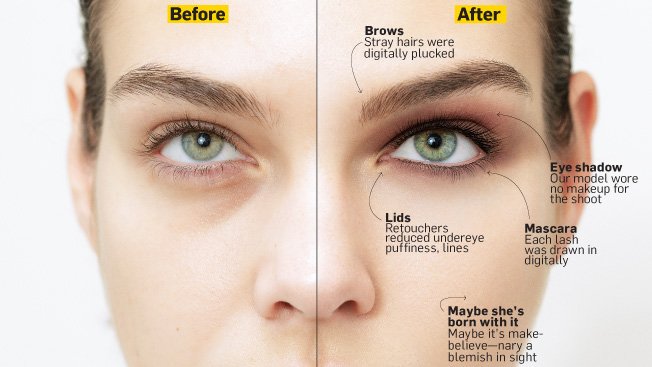
The Very Famous Pop Diva insisted that her magazine headshots were absolutely not retouched. That straight white smile? Hers. That luminous skin? Hers. The big beautiful eyes? Hers, all hers, the singer declared, maintaining her Photoshop innocence with the indignity once reserved for chaste women accused of wanton living.
Sitting at home on her couch, Helene DeLillo laughed out loud when she happened across this diva’s protestations on television. A master retoucher and Adobe-recognized guru, DeLillo knows what agents, publicists and agencies so often hide from the talent in order to protect egos and plausible deniability in the culture wars over increasingly aggressive digital post-production.
“There’s always something to fix—always, always” says DeLillo, who fixed the singer’s photos by filling in a chipped tooth, spot erasing her blemishes and extending her eyelashes. “Every single company is retouching, even if they say they’re not,” she says.
The digital fairy dust has fallen so thick yet so imperceptibly since Photoshop was created in 1990 that even celebrities themselves may not realize when the magic wand is working on their behalf—not to mention the clone tool, the healing brush and Liquify, the shape-shifting mother of digital enchantment, introduced in 2000, that morphs objects as easy as pulling taffy. Today, fashion models who appear gaunt can get their pixels plumped to fill in bony joints and jutting ribs. Celebrities, meanwhile, routinely get slimmed down to look more like models.
After a decade of deafening criticism, capped by the American Medical Association condemning unrealistically retouched models as a public health hazard in 2011, digital doctoring may be entering a new age of regulation. In a pivotal decision, the National Advertising Division of the Council of Better Business Bureaus late last year found that a CoverGirl mascara ad featuring singer Taylor Swift was not “truthful and accurate” because her luxurious eyelashes were enhanced with airbrushing. The finding represents “potentially a sea change,” says Terri Seligman, an advertising and marketing lawyer with Frankfurt Kurnit. “It appears there will be a great deal more scrutiny of image.”
The landmark case began with another Photoshop guffaw, as NAD director Andrea Levine describes her reaction while thumbing through a copy of People magazine during a routine review. It wasn’t the pretty woman in the ad that caught her attention, though. “It didn’t matter to me if she was a known actress or model,” says Levine. “You don’t want to tarnish her. She was just called in to take a photo.” The problem was with what the NAD head saw below the photo, as she leaned in to read the fine print that stated: “Lashes enhanced in post production.”
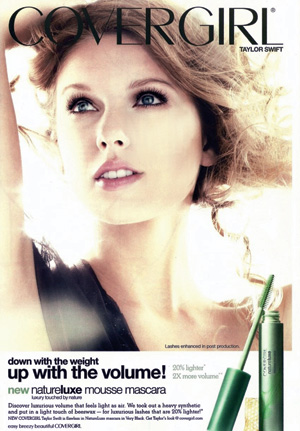
“It was so over the top that I just burst out laughing,” she says. “[The picture] is a product demonstration. The product is mascara. Mascara should make your eyelashes longer and thicker. When you take a picture, you can’t enhance it.”
Procter & Gamble executives were perhaps justifiably surprised when the NAD opened an initial inquiry. “Retouching is standard, and post-production is standard across all advertising,” says Brent Miller, CoverGirl spokesman. “Everyone does it.”
That used to be the case anyway. The company quickly pulled the ad in a voluntary move that the NAD praised.
Why the regulatory crackdown now? Multiple factors include escalating product claims, increasingly manipulated media images, more scrutiny among watchdog groups and mounting political backlash. As Levine explains it, P&G’s disclaimer combined the red-flag-waving nerve of labeling its faked photo with a pitch stressing that its mascara was “20% lighter” and adds “2x more volume.”
“It depends on the claim that goes with the photo,” says Levine, calling the CoverGirl ad “garden-variety misleading. When you tell me in the ad you’ve tinkered with the demonstration, then I feel compelled to do something.”
That standard, Levine says, stems from a TV spot from the 1960s for Colgate-Palmolive Co.’s Rapid-Shave that the Federal Trade Commission found deceptive, a judgement upheld by the U.S. Supreme Court. The ad in question, featuring what appeared to be a piece of sandpaper being shaved, was in actuality a piece of plexiglass covered with sand.
The standard has not traditionally been applied to cosmetics advertising, however. “Beauty shots were beauty shots,” says Seligman. “And the image itself was not necessarily considered a claim.”
Perhaps fittingly, the precedent-setting NAD inquiry involves a high-volume beauty product worn by most women—not to mention one of the most digitally enhanced facial features in advertising. But public reaction to the NAD’s lash-stand was not exactly a big thank you. “The biggest criticism was, ‘Oh, finally, you noticed this has been going on forever,’” says Levine, who had been on the lookout for beauty ads involving issues similar to high-profile cases in the U.K.
British regulators have rejected airbrushing as misleading in a number of celebrity-fronted cosmetics ads, helping inspire legislation aimed at labeling retouched images in France, Norway and recently Arizona. In late March, Israel became the first nation to pass such a law, in part spurred by the U.K.’s notably stricter Advertising Standards Authority and political activism.
In recent high-profile cases, the U.K. independent watchdog group banned two retouched L’Oréal U.K. Ltd. ads as “misleading” and “exaggeration,” following up on complaints from Liberal Democrat MP Jo Swinson. Lancôme’s Teint Miracle two-page spread featured a polished Julia Roberts with the copy: “naturally bare, beautifully flawless.” Maybelline’s ad for the foundation dubbed The Eraser pictured Christy Turlington with patches of naked skin alongside cosmetics-enhanced skin and a disclaimer stating “Illustrated effect.”
In the ASA’s review, debates about feminine beauty veered into the surreal with L’Oréal defending its celebrity images as acceptable because both stars in question are famously lovely, with “fantastic” and “naturally healthy and glowing skin.” Though regulators allowed that both women are known to be gorgeous, L’Oréal declined to cough up pictures before retouching to prove it, ultimately leading to the ban.
American lovers of the simply fabulous need not worry, says Levine, since nixing an ad for being too beautiful would never fly under U.S. ad guidelines. The British finding, she explains, “wasn’t about the performance claims—it was simply that Julia Roberts doesn’t look that young.”
Though photographers have always used lighting, hair, makeup and darkroom tricks to create glamour, what passes for beautiful in ads today has changed dramatically because of the advent of Photoshop, says Dartmouth College’s Hany Farid, a computer science professor who studies photo manipulation. Advertisers, he says, “have been playing a very dirty game.” He sees the modern retouching aesthetic as moving toward a Barbie doll ideal for women and G.I. Joe for men. “They know they’re crossing the line. I think they’re starting to see the writing on the wall.”
But a generation of creatives may not realize how much visuals have changed since Photoshop’s Liquify was introduced with Photoshop 6.0, making it possible to slim bodies, enlarge heads, narrow waists, and pump breasts and muscles with a click and a drag.
“There is nothing in the history of photography that is analogous,” says Kevin Connor, a former Adobe project manager now developing software with Farid to numerically rate to what degree an image has been manipulated. A member of the Photoshop team that launched Liquify, Connor watched as photographers switching from film to digital evolved from purists who derided darkroom tricks into photo artists who freely paint with pixels.
Before long, though, celebrity retouching scandals would pick up steam—from actress Kate Winslet’s slimmed thighs to Katie Couric’s thinned torso to Jennifer Love Hewitt’s purportedly censored cleavage. With budget-cutting and high demand for Web images, retouching ran amok. In a low point, the website Photoshop Disasters (psdisasters.com) posted a Ralph Lauren ad showing model Filippa Hamilton looking like a bobble-headed Bratz doll with rubbery arms and a head larger than her pelvis, which is, of course, anatomically impossible.
“People always knew these images were manipulated, but I don’t think they knew how really bad it was,” says Vernon, who runs the website and who declined to give his last name for fear of retaliation. Vernon says he is still chastened by a cease-and-desist order from Ralph Lauren’s lawyers that led his site’s administrator to remove the image. Still, other blogs picked it up, posting the picture worldwide and adding the expected snark and derision. Ultimately, Ralph Lauren executives admitted to the “poorly imaged photos,” promising improved internal controls. “It was totally a mistake,” says corporate communications senior director Ryan J. Lally. “We rectified it. We did not run from it. It’s a closed issue.”
Not quite. As everyone knows by now, everything lives forever on the Internet. The American Medical Association might well have been thinking of the now-infamous Ralph Lauren image in its groundbreaking call for advertisers to limit body morphing, citing research linking unrealistic body images to mental and eating disorders, especially among youths. The AMA sent a letter to the American Association of Advertising Agencies, urging the industry to consult with health professionals to create appropriate advertising guidelines. Declining to comment directly, 4A’s president and CEO Nancy Hill issued a written statement, referring to the association’s history of supporting responsible advertising, specifically mentioning the Ad Council’s work with Michelle Obama’s “Let’s Move” initiative targeting childhood obesity.
But while fighting fat may be popular, combatting digitally enforced dieting seems too hot to handle. Agencies such as Gotham and McCann-Erickson, which were named in recent retouched-ad bans in the U.K., would not comment. “That’s pathetic,” says Tim Piper, the filmmaker and former Ogilvy Toronto writer/director who co-created the award-winning Dove Evolution time-lapse spot exposing how Photoshop works. “People in the industry don’t want to hear that it’s bad, but they know it is.”
The bottom line is that airbrushed images can sell products, according to Karen Grant, senior global beauty analyst at the research firm NPD. She notes that highly polished cosmetics ads may be driving growth in new categories of makeup and skin care products that claim to improve skin tone, texture, spots and radiance—all surface facial features buffed by standard retouching. “Yes, I think there’s a correlation,” she says. “Is there hard data to prove it? Absolutely not.”
But the soft evidence is compelling. Ten to 15 years ago, beauty products did not promise a flawless finish, and women were not as conscious of having their skin glow or radiate. “The consumer doesn’t know this is a Photoshop look,” says Grant. “They look in a magazine and say, ‘That’s beautiful—I want to look like that.’”
With women buying makeup to attain that Photoshop finish, public attitudes are nuanced, if not ambivalent. For example, a grassroots petition allied with the National Eating Disorders Association calling for federal retouching labeling laws has so far collected only 2,225 signatures.
“We are surprised that we have not seen more support,” says Seth Matlins, a former marketing agent at Creative Artists Agency who launched a truth-in-airbrushing push along with a positive-message apparel company and a magazine, Off Our Chests.
The fact is, consumers are now even airbrushing at home, as confirmed by a Glamour survey in which 60 percent of 1,000 women polled had no problem with retouching personal photos that might appear on Facebook or online dating sites. “It’s not just a media practice anymore,” says Glamour executive editor Wendy Naugle. “Women are now doing this, and men too.”
In results that surprised Glamour editors, 75 percent of women said they did not mind magazines and advertisers erasing minor blemishes, deleting stray hairs and smoothing wrinkles in clothing. But women did draw the line at body morphing, with only 22 percent approving the digitally slimming away of even five pounds.
The issue cuts close to home for Glamour, seeing as the Photoshop Disasters blog accused the magazine of erasing actress Kristen Stewart’s arm on its cover. Absolutely denying that happened, Glamour editors pointed to its history of publishing diverse images, including news-making photos of plus-size model Lizzie Miller showing her unretouched belly.
With so many magazines facing criticism for heavy post-production—including Vogue’s dramatically revamped cover shot of Adele and Redbook’s slenderized Faith Hill—Glamour took a stand this past March, promising to be more forceful in controlling retouching, including “asking photographers we hire not to manipulate a woman’s shape in the photos we commission, even if a celebrity or model requests a digital diet (alas, it happens).”
Will celebrities willingly go it natural? How about average folk retouching at home? Or women in real-life? Not likely. “People need a reality check,” says NPD’s Grant. “Everyone wants to look natural, but women recognize that it takes a lot of products to look completely natural.”
http://www.adweek.com/news/press/lash-stand-140785?page=1

